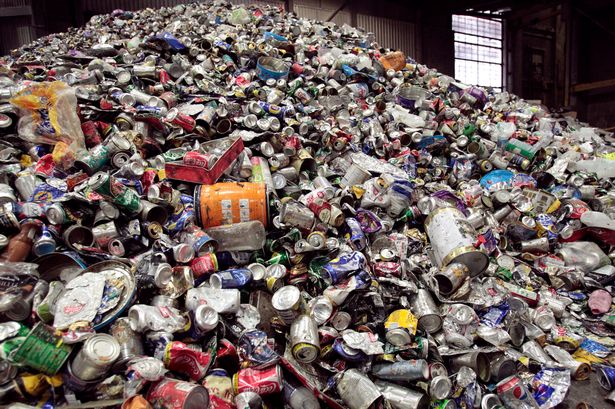
The management, treatment and recycling of waste result from an observation: the volumes of waste have multiplied since 1950, as well as their harmful effects on health, the environment and the economy.
Household waste is always the same. The content of household trash has changed little since the last survey in 1993. The main differences relate to sanitary textiles (wipes, diapers, etc.), which have increased, and toxic waste which has decreased. In detail, household waste includes:
- 32.2% organic matter
- 21.5% paper and cardboard
- 12.7% glass
- 11.2% plastics
- 3% of metals
- 19.4% of other items
Waste management is a crucial step. If we were content to store our waste in landfills, the problem of their accumulation would arise because, depending on their nature, they can degrade, and therefore disappear, very slowly.
To avoid being invaded by this waste and to limit the risks of pollution and poisoning which would result from it, waste treatment procedures are put in place. The principles applied, before and after the production of waste, are the reduction of volumes, the reduction of their toxicity, the improvement of their recycling (potential and realized) and the secure landfill of final waste.
As these processes are expensive, the spotlight is given to those who make it possible to recover waste.
Environmental and health issues
The accumulation of waste generates four types of nuisance.
1 / A deterioration of the living environment caused by visual nuisances (plastic bags hung in trees, macro-waste on beaches) or olfactory (organic matter in decomposition, combustion of chemical materials).
2 / An economic impact due to the loss of the attractiveness of a site following this deterioration of the living environment and the decrease in its productivity, in the case of a fishing area or agricultural land . To this can be added the additional costs caused by pollution control, in the case of drinking water for example, and by the societal consequences of intoxication: medical treatment, work stoppages, etc.
3 / Because there is also a health risk following injuries (shards of green, syringes …), poisoning (water, air pollution …) and diseases (bacterial proliferation, infestation of parasites, rats …).
4 / Finally, environmental pollution and ecological degradation during eutrophication of the environment, poisoning, suffocation or injury caused to wildlife when it absorbs or clings to waste.
More indirectly, waste is a reflection of our consumer society and its exploitation of natural and energy resources. Processing them for recovery is a way to compensate for the depletion of these resources and the degradation associated with their exploitation.
What is the life cycle of our waste? In the beginning was the product … well almost, since it is itself the product of transformation processes of raw materials. After its acquisition, this product is used until it is abandoned due to the loss of its technical utility (failure) or the evolution of the social context (fashion, regulatory evolution, etc.). It then becomes waste.
Plastic caps are also recyclable and companies like Kannapolis dumpster rental help increase awareness of their customers when it comes to recycling plastic items. This waste is, depending on the case, sorted, sold, given or collected, sorted, repaired or recharged or even transformed.
A fraction of the waste cannot, in the state of current technologies and economic feasibility, be recovered. This fraction forms the ultimate waste which, after possible reduction in their toxicity, is stored in specialized centers. These ultimate waste storage (CSDU) or technical landfill (CET) centers aim to prevent any leakage into the environment which could cause pollution or affect human health.
As these technical centers, formerly known more commonly as landfills, will be bequeathed to future generations, landfilling does not comply with the principles of sustainable development. The Federal government has therefore set the objective of reducing waste destined for landfill or incineration by 15% by 2022.
You have probably already noticed these logos on recycling, which can be found on the packaging of your products. What is their significance?
It is sometimes difficult to know what to do with your waste, even with the best will in the world. Is it biodegradable, therefore compostable? Is it recyclable? If so, should we put it with plastic, in landfill or elsewhere? Is it toxic?
The reflex is to turn to labels to find clues, but we then fall into a jungle of logos and symbols in the sometimes misleading sense. The most important is the Möbius ring, which symbolizes an endless cycle of recycling. Its presence indicates that the product is recyclable. Sometimes a percentage appears in the center, it means that the product already contains this percentage of recycled materials.
The other very common symbol found is the Green Dot with its double arrow which also evoked an endless cycle. Unfortunately, this logo is misleading because it does not mean that the product is recyclable or recycled! It just signals that the producer is participating in the recycling program for household packaging. This participation is a regulatory obligation which requires manufacturers to set up packaging processing structures or to subcontract this task to a third party to which they pay a fee.
Other logos provide information on the constitutive materials of the products and therefore facilitate the sorting of waste.
Finally, symbols indicate the toxic nature of the products or their contents, for humans or the environment. Their elimination must therefore take these risks into account. This is the case, for example, for drugs which should not be thrown in the trash, or worse in the sink or toilet, but must be the subject of a specific channel.
